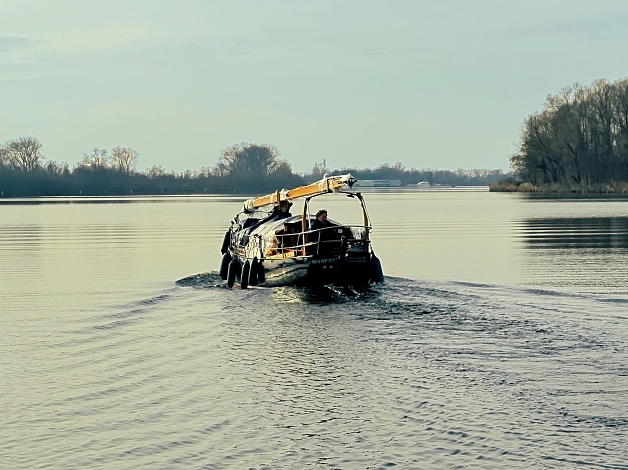Trewes Commodore 32 | Full Electric
Boat name
Size L
Year of construction
Type of project
Status
Motorisation
Battery pack
Load switching Integration NMEA
Shore power steering
Other
E-WERF's conversion of the Sea Star was hailed as experienced very positively. The team consists of four honest and motivated professionals, They are constantly learning and striving for the best results. Pride in their work, visible in the final result.
"A dream team!"
Article by the ship's owner in "Sailing" magazine
The Trewes Commodore is the successor to the Trewes I. The Commodore is 85 cm longer than its predecessor and has a hunting fence (aft overhang) instead of a flat-hole. The boat has a substantial prow, shapely lines and a extensive furnishing for its size. Although originally built for Dutch conditions, there was also high international demand To.
The Trewes Commodore was immediately a success and fitted perfectly into the time frame. Today, these circa 40-year-old steel yachts, often still equipped with an original SABB Diesel, by enthusiasts Carefully restored and kept afloat.
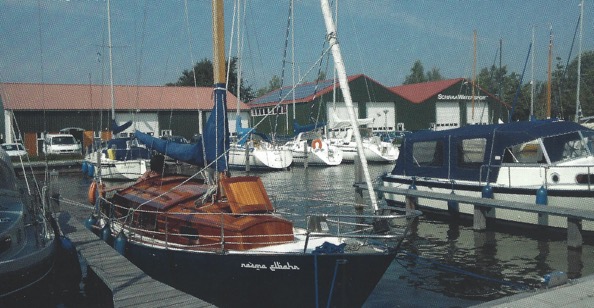
Work of the previous owner
All credit and praise will go to the previous owner, who is the beautiful luxurious wooden construction self-manufactured.
The boat was sold for just 5,000 euros, bearing in mind that a vintage car maintenance requires and that parts need to be replaced to meet the needs of those on board and comply with legislation.
Perhaps it was a misspurchase by an inexperienced sailor. Interestingly, however, on the internet much to read about mr van der Meer, the architect of the Commodore from the middle of the last century.
The boat, meanwhile, had about three years on dry dock located, neatly packaged in thick heavy tarpaulins. She only had a 12V system (house battery and starter battery) that needed charging.
"The engine struck at first attempt after 3 years of downtime."
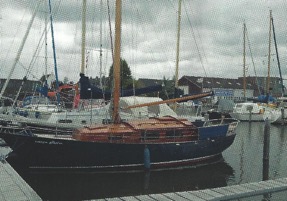
Renovation work
Initial renovation works include:
- A new water tank of 80 litres.
- A new diesel tank of 80 litres.
- A diesel filter with water separator.
- A inverter of 2,000 W (12V to 230V).
- Navigation lights on bow and stern.
- New VHF and AIS installation.
- Shore power connection and galvanic isolator.
- Replacement of the floor in cockpit and the slatted base under the mattresses.
- Renewal of the kitchen worktop and installation of a hob.
- New seat cushions, because the old ones kept smelling musty.
- Sanding and varnishing of all benches.
During the work, it was discovered that the old paint leaded was and gave off a typical old smell, mixed with diesel smell because of a leaking tank.
Testing the engine
After three years of downtime, the engine needed to be tested:
- Old diesel was washed away and replace the diesel filter.
- The water cooling system was still protected with antifreeze.
- To great surprise the engine struck immediately on one of the first attempts!
- "These one-cylinders cannot be broken."
A special detail: the engine has no reversing clutch but uses a system in which the position of the propeller blades changes. This keeps the motor always turning in the same direction.
One problem, however, was that the controls were incorrectly mounted:
- The lever forward meant reverse.
- The throttle was on port side, while the steering system was on the starboard side.
This error was rectified before the boat was registered in Belgium and given a registration number.
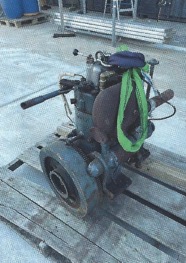
Initial momentum and problems
In June 2023, the boat was prepared for the crossing from Woudsend to Nieuwpoort:
- Route: Woudsend → Stavoren → Enkhuizen → Amsterdam → IJmuiden.
- In Broekerhaven, a rusted rudder blade hinge repaired with help from experienced harbour masters.
The trip went smoothly until the IJmuiden sea lock, where it went completely wrong:
- The boat suddenly floated across the lock.
- Due to a wrong manoeuvre, the boat struck first with the bow and then with the transom against the high lock wall.
- The wooden rudder blade broke completely in half, leaving the boat adrift.
- A friendly sailor and a fishing boat took the Starfish in tow To the nearest marina.
The plan to sail further was abandoned. The boat was taken to Nieuwpoort by truck.
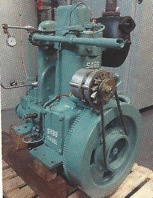
Conversion to an electric drive?
After these experiences, the owner began doubting the engine:
- The Current SABB Diesel was powerful, but loud.
- The boat was difficult to manoeuvre without a bow thruster.
- A stronger and quieter motor would be needed for relaxing boating.
Two options were considered:
- A new diesel engine - more powerful and cheaper.
- An electric drive - durable, quiet, but a bigger investment.
A key question was:
"With an electric motor, aren't we tampering with the historic character of the boat?"
After much consideration, we concluded that the old diesel engine had to be replaced, preferably by an electric motor to get as close to sailing as possible - even without sail and while sailing on canals.
The search for a suitable yard
A search in the Nieuwpoort harbour at various shipyards delivered little on.
Most had no experience with installing an electric motor and for some it would be a nice first project are. Moreover, most yards were fully booked for the coming months.
A scavenger hunt on internet brought single solutions forward.
When looking for "electric motor" and "shipyard" appeared on Google instant overview of companies carrying out this conversion.
Especially - or rather exclusively - in Netherlands. There is already built up quite a lot of experience.
The final selection was based on several factors:
- Location
- Quote
- References
- Range of products
In the late summer of 2023 we sent an e-mail to several shipyards:
Email to the yards
"I am looking for an option to fit my boat with an inboard electric motor. My boat is a Trewes Commodore 32 ft, built in 1968. She currently has a Sabb 1G 10 hp inboard motor, but this is more than insufficient to manoeuvre the 7-tonne steel boat smoothly. Although it is a sailing boat, I would like to sail canals with it as well and should be able to sail for about 6 hours on one charge. This will also require a new propeller shaft and propeller (the current installation is without a reversing gear, but with special adjustable propeller blades). Do you have experience with this conversion and can you give me a guide price for such a project?"
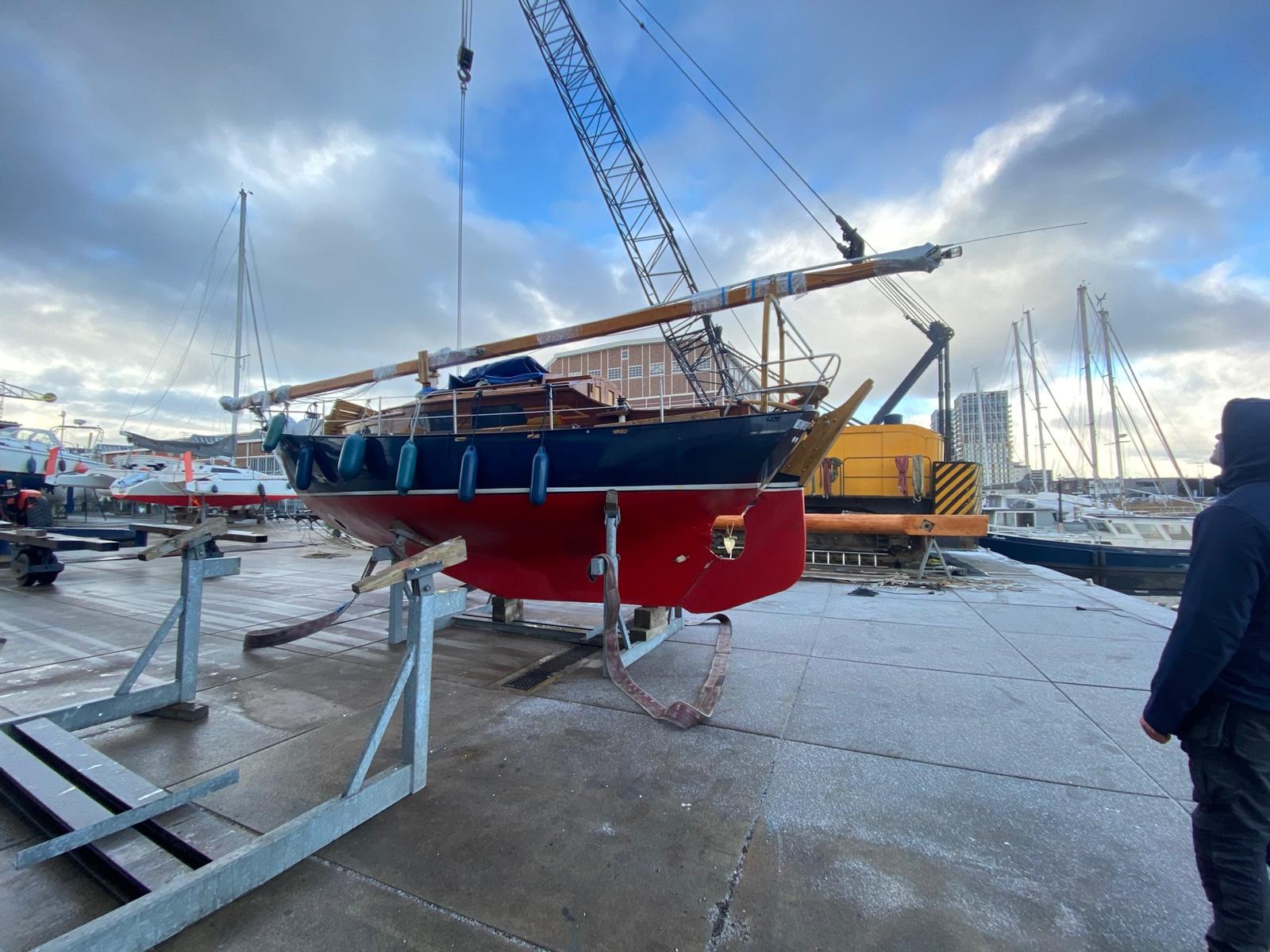
Choice of a Dutch yard
Of the various shipyards, a Dutch party came up with the most convincing answers and experience.
They offered a complete solution:
- Dismantling the old diesel engine
- Installation of an electric motor and battery pack
- New propeller shaft and propeller
- Conversion of electrical systems
At October 2023 we brought the Starfish to the Netherlands for conversion.
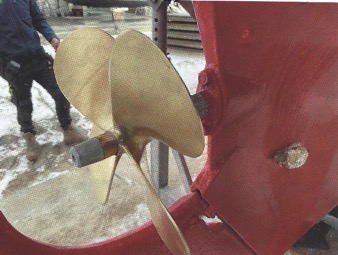
Preparing for conversion
The agreement for the conversion was signed in late November 2023 concluded with the shipyard E-WERF.
- The required products were ordered by them.
- The Transport of the Starfish from Nieuwpoort was organised.
- Beginning January 2024 would be the actual conversion take place.
The home port of the Starfish is Newport, but E-WERF is located at Nieuwe Meer in Amsterdam (NL).
Given the questionable state of the diesel engine and my limited sailing skills, was chosen for road transport to Amsterdam.
Professional help from "Transport Aertsen" was called in.
- Getting out of the water of the boat.
- Lowering the mast.
- Securely mounting the boat on the truck.
- The entire operation took approximately four hours.
The transport by road went wrinkle-free.
The boat was put on Rhebergen shipyard in Amsterdam placed on a trestle and the planned conversion could begin.
Because E-WERF itself had no room for a 1.5-metre keel, the boat was converted on site.
Once the boat ready to sail was, this sailed on to E-WERF's staging area for further completion.
Conversion process
The removal of the old diesel engine was no easy task.
- The engine mounts were completely rusty.
- The fuel system had to be completely deleted become.
- The propeller shaft and adjustable screw were worn and had to be replaced.
New electric motor installed
The choice fell on a powerful electric motor, suitable for quiet and silent sailing.
Battery pack
- The boat received a battery pack with sufficient capacity for 6 hours of sailing.
- Charging via shore power and solar panels.
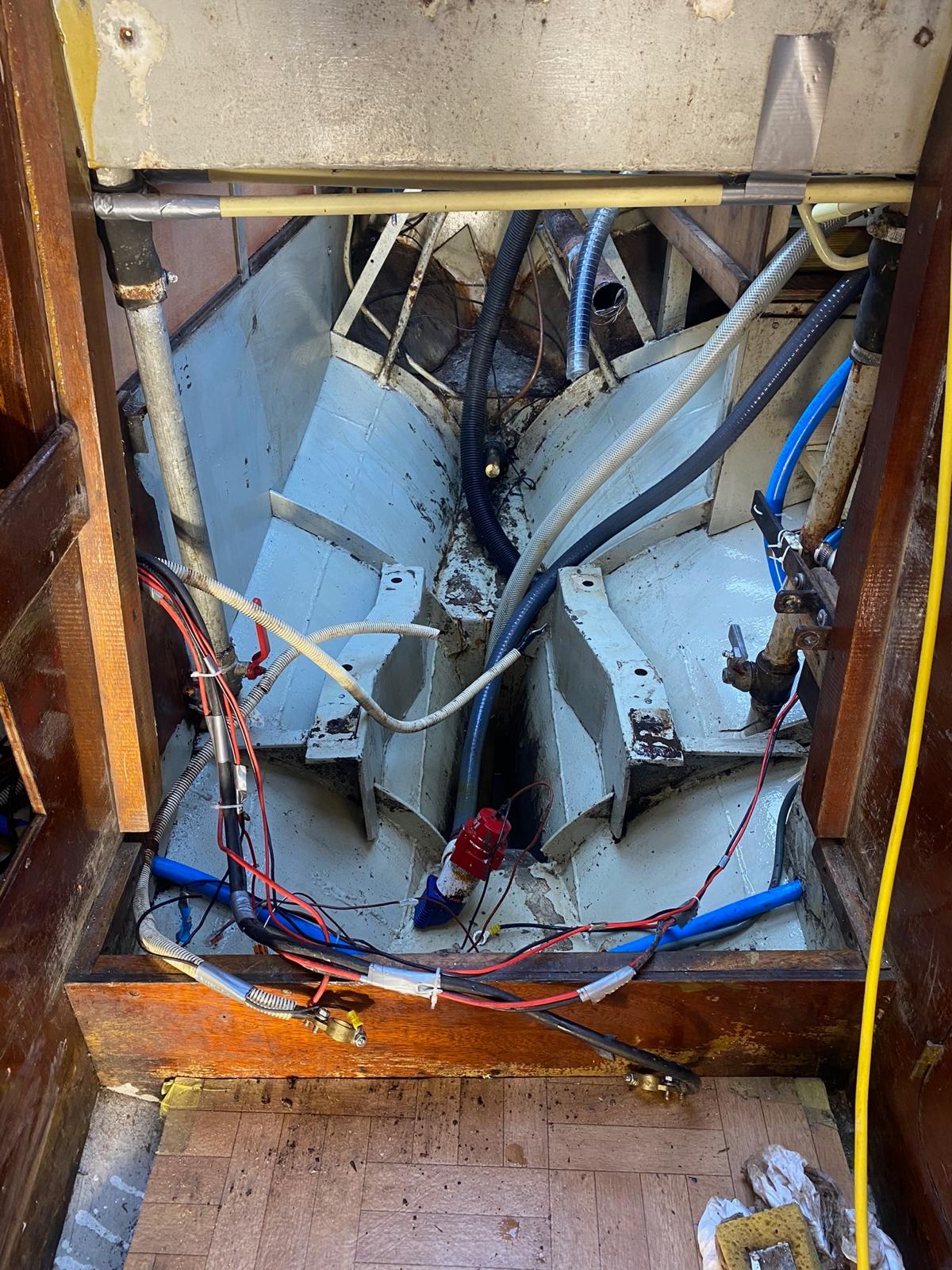
Dismantling the SABB diesel engine
- The SABB motor (serial number G 68 820) was in few hours dismantled.
- The number 68 refers to the year of construction, 1968.
- The engine was sold second-hand.
- He was completely overhauled, redecorated and runs reportedly still in top condition.
During disassembly, it was discovered that the screw could not be retained in its entirety.
- Some remained fixed to the boat, because this was used for the lubrication of the propeller shaft.
- The old lubrication system with two grease pots was left intact.
- The old screw was anchored to the hull and was used to adjust the propeller blades for forward and reverse sailing.
This system was then poured into the boat with concrete, making removal a big job would become.
Engine compartment and electrical installation
The opportunity was taken to discuss the thoroughly clean the area under the engine and to painting with Primocon.
After a half century had been in the bilge collected quite a lot of dirt, including screwdrivers.
This job went exceptionally smooth:
- Without too sanding became a fast and opaque layer of Primocon paint applied, after the surface defatted was with car brake cleaner.
- Redundant parts, such as the diesel tank, filter and water tank, were deleted to make way for the new device.
Installation of the electrical components
The installation of the previously mentioned electrical components (see VAREN, June 2024 edition) took around five days occupied with two persons.
- The welding up the old skin penetrations (exhaust gas and engine water cooling system) and installing a steel tunnel for the bow thruster lasted day and a half.
- In the meantime:
- The underwater ship fitted with a new antifouling.
- Paint damage sanded, filled and repainted.
The space formerly occupied by the 80L diesel tank was taken, is now padded with three battery units on port side.
An additional battery unit was starboard, along with the MultiPlus.
New electrical installation (48V)
Because the lithium batteries operate at 48V, was a custom charger needed.
- The existing 12V battery charger was redundant.
- A Small 12V house battery was retained to maintain the operation of instruments and lighting ensure.
- This battery is now charged via the 48V battery bank with a Victron Blue Smart charger.
- The previously installed 2000W inverter (230V from 12V) became redundant, as the new 5000W inverter integrated into the MultiPlus II.
The lithium batteries stay in top shape if they connected to shore power are.
Key benefits:
- The charge status can be monitored remotely via a modem and Victron VRM app.
- In the winter can be a special charging profile are used, with the batteries be charged up to 70%, but only above 5°C.
- Lithium batteries can be discharged up to 100% and do not suffer from the memory effect such as lead-acid batteries.
- Capacity loss is only 3% per month.
- After six months without shore power, some 80% of battery capacity is still available (unless devices remain 'online').
The basic slumber consumption of the current installation at the Starfish is 0,5A.
- This means that the full battery capacity would be consumed within a month without shore power (20 kWh = 400 Ah).
- Cost of a kWh depends on supplier.
- Running online devices will cost around €5-10 per month in 2024.
Earthing and electrolysis prevention
When installing electrical components in a wet environment is good grounding essential, both:
- When using shore power.
- When sailing on its own power supply.
In the initial renovation of the Starfish became a galvanic isolator installed to the grounding the shore power, so that these no longer attached to the engine/hull.
Now the old engine block removed was, a new earthing be installed:
- Floating mounting was chosen:
- The negative pole of all electrical components was interconnected, making the entire installation forms its own grounding.
- By not attaching the earthing to the steel body, electrolysis is suppressed.
- Additional magnesium anodes (for freshwater) and a zinc anode were added to further reduce corrosion.
New electric motor and space saving
The installation of the compact electric motor had additional space, despite the:
- Water cooling (left)
- Motor controller (rear)
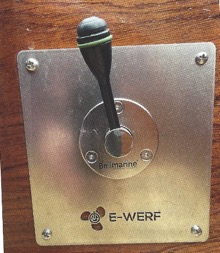
The Victron Multiplus II and the Bellmarine electric motor
During the conversion, the Bellmarine electric motor installed, which much more compact is than the original SABB 1G diesel engine.
- As a result, there was lots of free space in the engine compartment.
- The extra space was partly filled by the voluminous water cooling and motor controller.
- The engine was placed on the existing foundation, which required few adjustments.
- With additional steel angle irons the engine was well aligned on the propeller shaft.
- Minimal vibration, friction and noise were achieved by careful alignment.
Above the engine remained sufficient space left for other installations, but this needed further be considered.
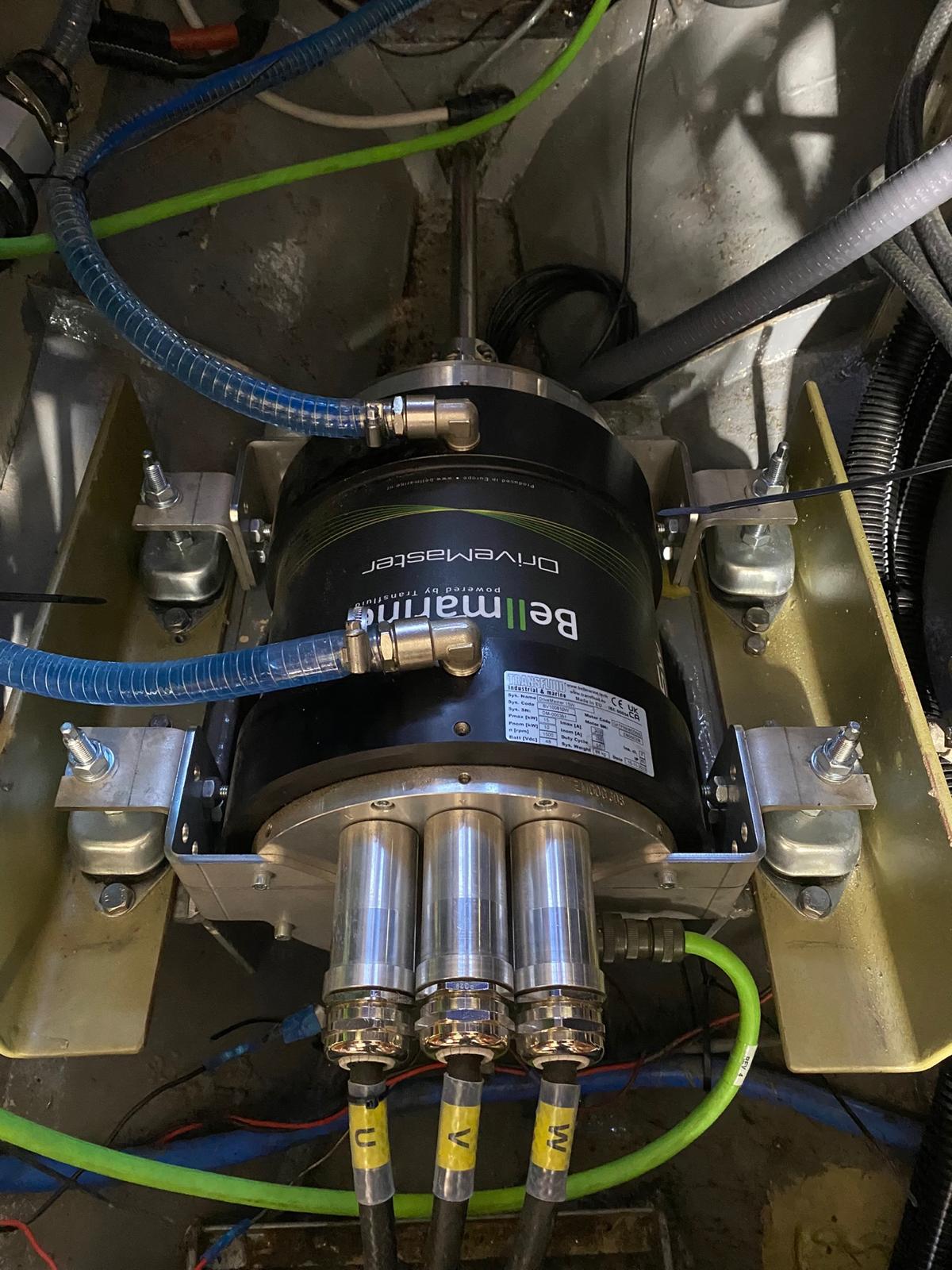
First test sail after conversion
The first test run after the launch in January 2024 was immediately a success!
- The boat feed silently from Rhebergen shipyard about the IJ, via Amsterdam canals and the New Meerschut lock to the New Lake.
- The energy consumption was hardly measurable At a speed of 4-5 knots.
- Full throttle: the stern sank noticeably deeper into the water At a speed of 7-8 knots.
- Full stop with backlash could within one boat length.
- The bow thruster immediately proved its worth:
- Easy transverse mooring at the quay.
- Ideal for solo sailors who want to be less dependent on a crew member.
E-WERF and the electric future of Amsterdam's boats
The shipyard E-WERF, located at the Nieuwe Meer in south-west Amsterdam, is a ideal test base for boating trips.
- After the arrival of the Starfish were all systems reviewed, tested and reprogrammed.
Retrieved from E-WERF works a team of four to the conversion of mainly sloops.
The yard is very busy, because all Amsterdam boats must have an electric motor by 1 January 2025!
The conversion of the Starfish For them, the first sailing boat, but not their first 32-foot vessel.
- The team is young, but did the technical knowledge largely learned by doing.
- Some employees made a career switch and have the skills gained in practice, as specific training for electric motors has only recently become available.
This lack of specialised shipyards causes many boat owners to wait to convert.
- Cost and knowledge gap are currently large barriers For voluntary electrification.
- Sooner or later electrification will become mandatory, making more demand will arise for expert recruiters.
Price, experience and future prospects of electrical conversion
Currently, some yards are trying to bring in customers by using price as the main asset.
- Number of working hours often underestimated, making the total price artificially low is held.
- Parts prices are transparent and verifiable online.
This report highlights that:
- Installations must be completely safe.
- Attention and time should be given to careful planning.
- Correct installation of electric motors and components is essential.
E-WERF: a positive experience
The conversion of the Starfish by E-WERF became as experienced very positively.
- The team consists of four honest and motivated professionals.
- They are constantly learning and striving for the best results.
- Pride in their work visible in the final result.
"A dream team!"
At the estimating the cost of conversion was taken into account several factors.
Read back the articles here:
Interested in electric boating?
No boat is the same but despite this, our wealth of experience allows us to make a good estimate of the expected costs. We prefer to speak to you in person and get to know your wishes. On this basis, we can make a tailor-made offer, after which you will be completely relieved by us when you hand over your keys.
Use our configurator for an indication or just take contact with us. You are also always welcome to drop by our yard and be shown around.

